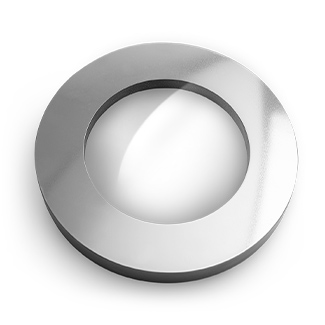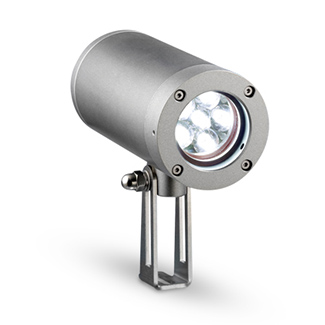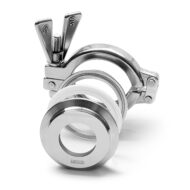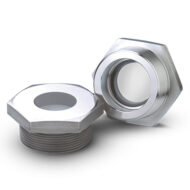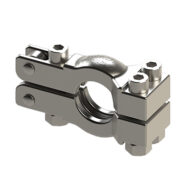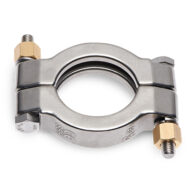Watch our Webcast
Resources
The cannabis oil extraction process, which involves volatile chemicals, requires a partner with deep expertise in the specialized equipment that can meet the requirements of hazardous operating conditions. LJ Star can provide a wealth of resources to help you learn more about the available options and critical considerations when choosing sight glasses, clamps, lighting, and other components to optimize your cannabis extraction operations.
Navigating the Evolving Landscape of Cannabis Oil Extraction: Techniques, Equipment, and Safety Measures
As more states legalize cannabis for both medical and recreational purposes, the demand for efficient cannabis oil extraction equipment is on the rise. These machines extract oils rich in THC (tetrahydrocannabinol) from cannabis, a process that involves pressures anywhere from 80 psi to 5,000 psi, contingent on the size and style of the equipment. Solvents such as carbon dioxide, butane, or propane are used in the THC extraction process. However, the combination of high pressure and flammable gases can present a potential hazard to workers, necessitating stringent safety measures.
An Inside Look at Extraction Equipment
Critical components of cannabis oil extraction equipment include sight glasses and sanitary clamps. Sight glasses allow operators to observe the extraction process and evaluate the product’s color and clarity. Sanitary clamps, which can handle high pressures and be opened quickly, facilitate cleaning connections and the vessel between batches. Since the extraction process involves repeatedly heating and chilling the process media, the sanitary fittings must endure these repeated thermal cycles without loosening.
METAGLAS windows, designed in a sanitary clamp style as MetaClamp® Sanitary Sight Glass Windows, serve as sight and light ports or as inline visual flow indicators. LJ Star recommends Type 61 threaded METAGLAS® mechanically pre-stressed sight glass windows for process observation in extraction equipment. These windows, which fuse borosilicate glass to a stainless-steel ring, provide exceptional strength under high pressure.
A high-pressure hygienic connection with the ASME Section VIII-rated Sanitary Clamp offers the greatest protection. Its Omega profile ensures uniform clamping compression. Cast from 316 stainless steel, the Sanitary Clamp features a heavy-duty three-bolt and hinge design that allows for quick cleaning and inspection access without compromising safety. The two-bolt Series SSH Sanitary Clamp, optimized for pharmaceutical and biotech applications, prevents disassembly while under pressure thanks to its Omega profile and two-bolt design.
Unraveling Cannabis Oil Extraction Techniques: Ethanol, CO2, and Solventless Methods
Exploring Ethanol Extraction
Ethanol extraction stands out for its versatility, capable of producing a wide array of cannabinoid derivatives. Its flexibility appeals to artisan processors developing high-end exploratory products and large-scale labs isolating specific terpenes or cannabinoids. Because this method involves volatile, flammable substances, operations must comply with strict governmental regulations under Class 1 Division 1 (C1D1) or Class 1 Division 2 (C1D2) conditions. Ethanol extraction’s solid return on investment and cost-effective operation, thanks to the recovery and reuse of ethanol across multiple cycles, appeal to many industry operators.
Deciphering Carbon Dioxide (CO2) Extraction
Pressurized supercritical CO2 is the star of the CO2 extraction method, extracting cannabinoids from cannabis and hemp biomass. Unlike ethanol, CO2 is not volatile and is frequently used in essential oil production. This method’s safety and efficiency draw manufacturers of medicinal products, ensuring safe extracts for consumers with compromised immune systems. The CO2 extraction method is also popular for creating vape products and other concentrates, as it preserves the strain’s original flavor profiles by maintaining fragile terpenes.
Understanding Solventless Extraction
Solventless extraction uses heat, pressure, ice, or water, eliminating the need for solvents. With the rapid advancement of cannabis processing technology and increasing demand for “clean” products, this method is growing in popularity. Despite higher retail prices, solventless products significantly contribute to the concentrated cannabis sector’s growth.
Considerations for Extraction Equipment Purchases
When preparing to invest in extraction equipment, consider the leading systems available for ethanol, CO2, and solventless extraction methods designed specifically for the cannabis industry. Consider each method’s benefits and drawbacks and ensure your decision aligns with your business goals and regulatory requirements.
In the rapidly evolving landscape of cannabis oil extraction, understanding these techniques and the equipment involved is essential to stay competitive and safe. As the sector grows, being informed about these methods will help you make the best decisions for your operation.
Partner with the Cannabis Extraction Experts
Enhance safety, efficiency, and product quality across your cannabis oil extraction operations by partnering with the process observation experts at LJ Star. Contact us today to discover how our specialized solutions can help you navigate this rapidly evolving industry.
